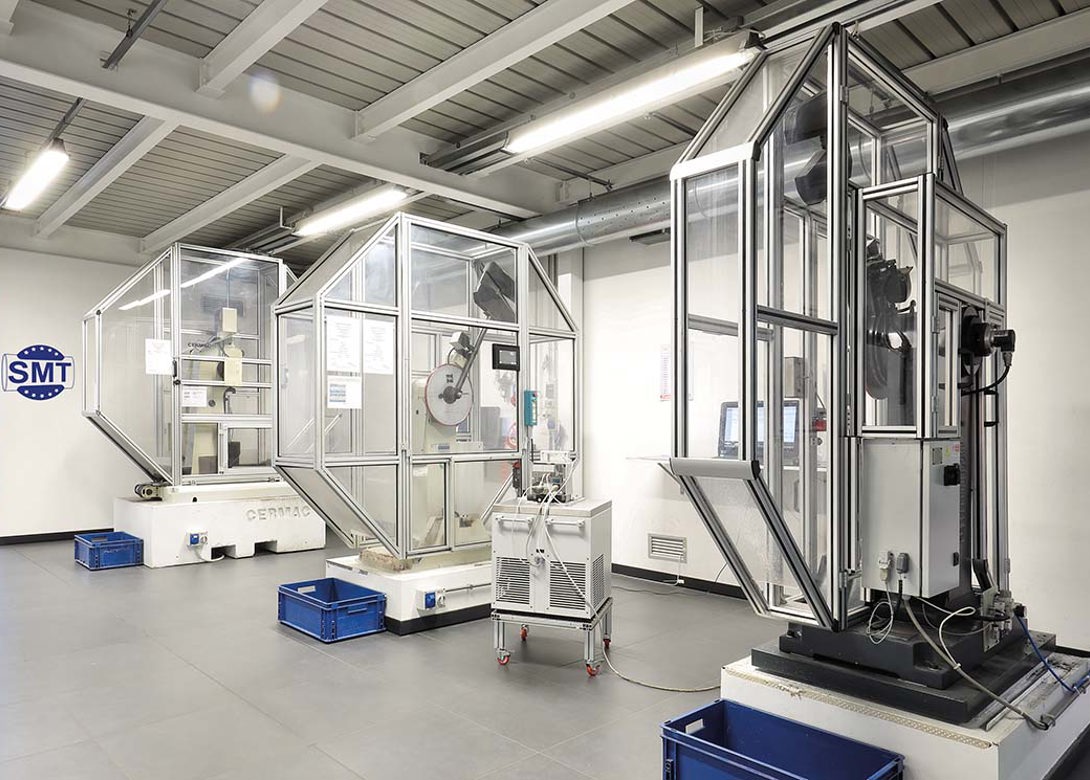
Here SMT Srl, the independent testing laboratory and mechanical workshop – with over 30 years of experience in mechanical, chemical, metallographic and mechanical fracture testing – looks at how the impact test was discovered and developed.
During the nineteenth century the railway had an important and rapid development both in Europe and in the United States. All of this involved building locomotives, tunnels, bridges, stations and many other structures.
Parallel to this development, unexpected ruptures began to occur in metallic material between 1840 and 1860 – most of them occurred without any warning because they were due to brittle fractures. These failures were investigated and it was determinated that they could occur even when the stresses were lower than the critical values. All this happened in the presence of random or periodic cyclic loads, thus the phenomenon of fatigue was discovered. With the discovery of fatigue came the need to find a test capable of predicting the behaviour of metallic materials when subjected to cyclic stress. It took several years and several stages to arrive at a test shared by all.
Firstly, in 1857 Captain T.J Rodman created the first drop-weight machine to improve the performance of steels intended for weapons. Then, in 1892, Le Chatelier introduced the use of notched specimens for the test with the drop-weight machine. He observed that the presence of a notch caused brittle fracture on steels that showed ductile behaviour when tested in unnotched form.
Next S. Bent Russel, in 1898, devised a new machine in which he used an hammer in the form of a pendulum. The purpose of this machine was to measure the energy absorbed by the sample – calculating the difference between the height of the pendulum before and after the fracture. This pendulum was of considerable size and was capable of fracturing full section samples. In the same period, 1901, in France, George A. A. Charpy, used a pendulum very similar to the one used today, but where the samples are notched bars. His aim was to standardise the test in order to create a database with uniform data.
From that time on, metallurgists concentrated their efforts on creating a standardised test.
Two specimens were mainly used:
The smaller specimen proved to be a winner because it allowed the use of smaller and cheaper machines. The tests carried out with standardised specimens quickly brought the first important results. During the IATM congress (1912) a steel producer presented a report showing that thanks to the improvement given by the resilience tests they had managed to reduce the number of parts rejected due to brittle behaviour by twenty times.
In 1922 the ASTM organised a symposium dedicated to the impact test and the following year an ASTM sub-commission was appointed with the aim of preparing a standard. It was 10 years before the ASTM E23-33T ‘Tentative Method of Impact Testing of Metallic Materials’ was published, where the use of the pendulum, both Charpy and Izod, the specimen with V-notch, and the imperial measuring system, was defined. This standard still exists and was revised in 2018.
Discussions arose about the radius that the striker should have, which in the UK was 0.57mm, while in France 2mm. In 1940 it was decided to adopt a radius of 8mm, which was formalised in ASTM E23-41, together with the U-shaped notch and the use of the metric system.
Despite all these efforts, the impact test was not yet included in construction specifications and regulations. However, between 1942 and 1946 there were a significant number of Liberty ship failures. The reason was investigated and a relationship was discovered between impact properties and transition temperature. A relationship that was not found with the tensile test, chemical analysis and microstructure. The minimum impact test value was determined to be 15 ft-lb.
From here to the present day, the value of the impact test was also taken into account during design, both in terms of absorbed energy and transition temperature, and thanks to this, accidents and damage that could have caused deaths and considerable economic damage were avoided.
Bibliography:

Will joined Fastener + Fixing Magazine in 2007 and over the last 15 years has experienced every facet of the fastener sector - interviewing key figures within the industry and visiting leading companies and exhibitions around the globe.
Will manages the content strategy across all platforms and is the guardian for the high editorial standards that the Magazine is renowned.
Don't have an account? Sign Up
Signing up to Fastener + Fixing Magazine enables you to manage your account details.